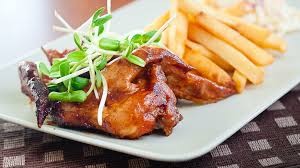The typical American fast food chains were already very successful globally before the first of them arrived in India following liberalization of economic policies. Due to their previous track record of multi-billion dollar sales in virtually every continent that you would care to name, they had been really gung-ho about India because of its huge middle class that was clearly ambitious and has lots of discretionary spending powers according to all market estimates.


The first of the fast food behemoths like McDonald’s, KFC, Pizza Hut, etc. arrived with a rousing reception and counter receipts were really on fire. However, very soon the chains realized that something was severely amiss and the growth that should have been there was simply missing, and worse, a large section of customers were simply not coming their way.
It took a lot of study of the gastronomic preferences of the target audience as well as introspection of their menus and company policies to realize that there was essentially a very large gulf between what customers preferred and what the menu offered. It also took some time for it to sink in that there were very strongly rooted cultural and religious taboos that prevented a large number of customers from eating non-vegetarian food or even dishes made from beef or pork. To survive they had to adapt their menus in such a way that it was appreciated by the Indian palates but did not lose out on their international appeal. Some prime examples:
McDonald’s
The recent revamping of the Maharaja Mac to include a double patty might have been noticed by regular customers but the world’s most famous fast-food chain has long back introduced items like McVeggie and McAloo Tikki to cater to not only the very large vegetarian population but also those who are reluctant to miss out on familiar Indian tastes. Inspired by the widespread popularity of chili potatoes sold as street food, McDonald’s launched Chili Paneer Pockets.
The penchant for heavily-spiced food also had the company offering items like Tadka: Masala Grill burger, McSpicy Chicken, Spicy Paneer Wrap, McSpicy Paneer, etc. The chain also used the occasion of the launch of the film Kung Fu Panda 3 to introduce a Chinese menu that featured Schezwan burgers in vegetarian and non-vegetarian variants to cater to the insatiable hunger for Chinese food in India.
Dominos
Domino’s also soon came to the conclusion that the traditional Italian pizzas on the menu were too often far too bland for palates that thrived on hot spices. However, adding typically Indian ingredients to Italian pizzas is not an easy job so Dominos took the trouble of setting up a food lab dedicated to experimenting with new flavors and recipes.
For the large population that is strictly vegetarian, the Peppy Paneer pizza features large paneer chunks and capsicum that has been received very well. For non-vegetarians who do not quite fancy the more bland chicken, Domino’s scored by offering Keema Do Pyaza, an extremely spicy creation of lamb mince, crisp onions, and jalapenos. However, all experiments do not always succeed; the Spicy Banana Pizza targeted at the banana-loving South Indians bombed and had to be pulled out of the menu.
KFC
Though KFC has the advantage of being chicken-centric that did not involve religious sensitivities for the non-vegetarian crowd, it did not forget to cater to the vegetarians. It offered something that had no parallel in the world in the 100+ countries it operated in – a rice bowl that featured aromatic basmati rice and flavorful gravy along with crunchy veggie strips. To cater to the spice and chili punch that most non-vegetarians craved for it launched Curry Crunch, an Indian style fried chicken with loads of spices and sprinkles of curry leaves roasted to perfection. It also offers customers an option of Fiery Grilled chicken.
